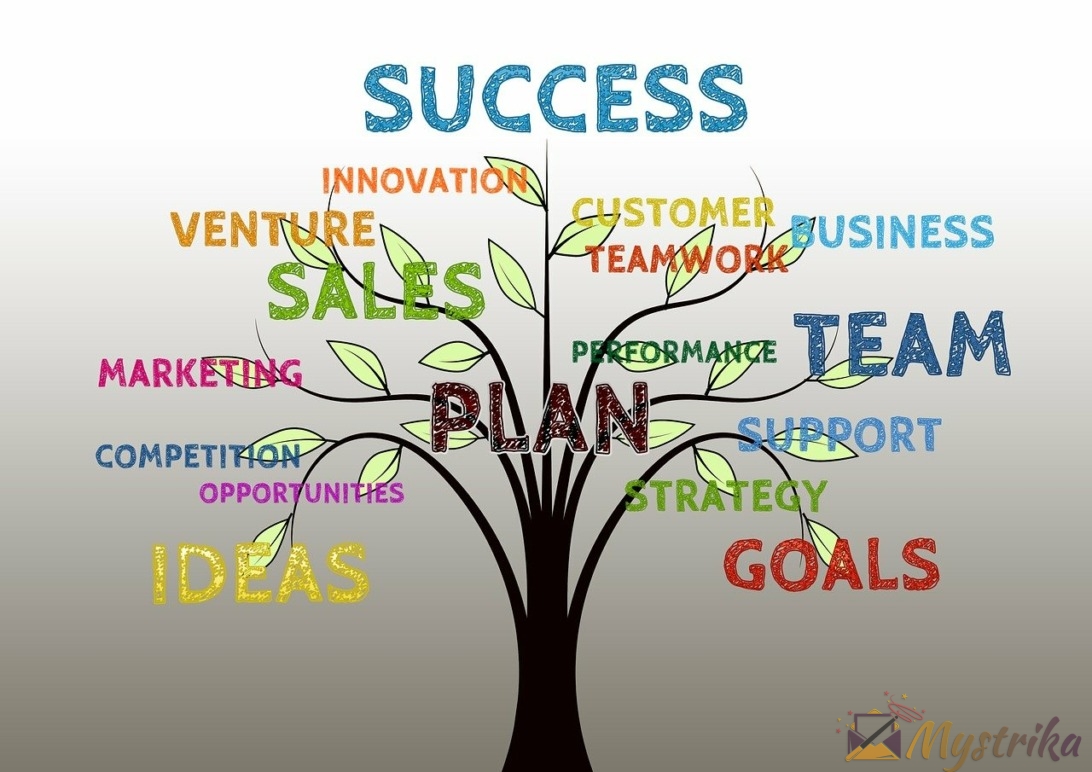We all love receiving unsolicited emails from strangers, don’t we? I mean, who doesn’t get excited about opening up their inbox to find an email from someone they’ve never met before, trying to sell them something they never knew they needed? Okay, okay, I’m kidding. The truth is, cold emailing can seem like a daunting task for many business owners. But the reality is that it can be an incredibly effective way to grow your business if done correctly.
At its core, cold emailing is simply reaching out to potential customers or clients who have no prior relationship with your business. It’s not about spamming people with generic sales pitches but rather crafting personalized messages that resonate with the recipient and compel them to take action. In this article, we’ll explore how you can use cold emailing as a tool for business growth by understanding its power, crafting attention-grabbing subject lines and messages, establishing credibility and building trust, scaling your strategy effectively and more. So let’s dive in!
Understanding the Power of Cold Emailing
By tapping into the potential of unsolicited outreach, you can open doors to new opportunities and expand your reach in ways you never thought possible. Cold emailing is a powerful tool for growing your business with cold prospects. It allows you to directly communicate with potential clients or partners who may not have heard of your business otherwise. However, it’s important to approach cold emailing strategically in order to maximize its benefits.
Crafting an attention-grabbing subject line is crucial to the success of any cold email campaign. You want your subject line to stand out in a crowded inbox and entice the recipient to open your email. One effective strategy is personalization – using the recipient’s name or referencing something specific about their company or industry can pique their interest and increase the chances of them opening your email. Additionally, keep it short and sweet – a subject line that is too long or convoluted can turn off potential recipients.
Once you’ve crafted an attention-grabbing subject line, it’s important to focus on email deliverability. This means ensuring that your emails actually make it into the intended recipient’s inbox instead of getting caught in spam filters or ignored altogether. To improve deliverability, avoid using spam trigger words like “free” or “discount”, use a reputable email service provider, and segment your email list so that you’re only sending relevant messages to interested recipients. By following these tips for successful cold emailing, you can tap into new markets and grow your business beyond what you ever thought possible!

Crafting an Attention-Grabbing Subject Line
Crafting a subject line that stands out and captures your reader’s attention is key to getting them to open your email. After all, what good is an effective cold email if nobody opens it? The subject line is the first thing that your recipient will see, so it needs to be compelling enough for them to want to click on it.
To increase your open rate and response rate, you need to use the best cold email subject lines. These are typically short and sweet, with a maximum of 50 characters. Some examples include “Quick question,” “Meeting request,” or even just the recipient’s name in the subject line. However, make sure not to use clickbait or false promises as this will only damage your reputation.
Once you’ve crafted an attention-grabbing subject line, it’s time to send cold emails using a personalized email template. This means customizing each message for each recipient based on their interests or pain points. In the next section, we’ll dive deeper into how personalization can help increase your conversion rates and ultimately grow your business.
Personalizing Your Message for Maximum Impact
Get ready to increase your conversion rates and make a lasting impact with personalized messages that speak directly to the interests and pain points of your recipients. Personalization is crucial when it comes to crafting an effective cold email. It’s not just about using the recipient’s name in the greeting or signing off with yours; it’s about making them feel like you understand their specific needs and challenges.
To achieve maximum impact, start by researching your target audience thoroughly. Look for common pain points, interests, and goals among them. Use this information to create a template that can be easily customized for each recipient. When writing a cold email, avoid using overly generic language that could apply to anyone. Instead, show the recipient that you’ve done your homework and are genuinely interested in starting a business relationship.
Remember, personalized cold emails are not just about making sales pitches; they’re also an opportunity to build meaningful connections with potential clients or partners. By taking the time to craft personalized messages that resonate with your audience, you’ll be able to establish trust and credibility more quickly than if you simply used a one-size-fits-all approach. So don’t underestimate the power of personalization in digital marketing – it could be what sets your email outreach apart from the competition.
As you continue crafting your cold emails, keep in mind that brevity is key. In our next section on keeping your email concise and to the point, we’ll explore how you can communicate all of your key information without overwhelming or alienating your recipients. With these tips in mind, you’ll be well on your way towards building stronger business relationships through effective email outreach techniques!
Keeping Your Email Concise and to the Point
Make a lasting impression with concise and impactful messaging, ensuring your cold email stands out from the rest and captures the attention of potential clients or partners. The opening sentence is crucial in determining whether or not your email will be read. To make the most of this opportunity, use a template that incorporates marketing best practices and tailor it to fit your specific business development goals. Keep in mind that recipients are inundated with emails daily, so keeping your message concise and to the point is vital.
When crafting your email content, focus on providing value to the recipient rather than solely promoting your business. Highlight how you can solve their problems or improve their operations. Remember that less is often more; by keeping your message brief, you increase the chances of receiving a reply while also demonstrating respect for their time. A successful cold email should leave a positive impression without being overwhelming.
Incorporating these tips when writing a cold email can increase success rates significantly. However, even with an impactful message, establishing credibility and building trust takes time. In our next section, we’ll explore how to establish trust through transparency and authenticity in communication.

Establishing Credibility and Building Trust
Establishing credibility and building trust is crucial in business relationships, but how can you achieve this through effective communication? When it comes to cold email marketing or outreach, one way to establish your credibility is by personalizing your emails. Make sure that you understand their business and connect with them on a personal level. Use their name in the subject line and throughout the email copy, as well as mention any commonalities you may have.
Another way to build trust is by having a professional email signature. This may seem like a small detail, but it can make a big difference in how potential clients perceive you. Include your full name, title, company name, and contact information such as phone number and website link. A clean and simple design will also help convey professionalism.
Lastly, it’s important to have a well-written cold email template that showcases your expertise without sounding too salesy or pushy. Keep the focus on how you can help them solve their pain points rather than solely promoting yourself or your product/service. By taking these steps to personalize your emails, use an effective email signature, and craft an engaging message that establishes credibility while building trust with potential clients.
As we’ve seen above, establishing credibility and building trust are essential when it comes to cold emailing for business growth. However, there are common mistakes that many businesses make when attempting this type of outreach. In our next section, we’ll discuss some of these mistakes and offer tips on how to avoid them for more successful results.
Avoiding Common Mistakes in Cold Emailing
Establishing credibility and building trust is crucial for any cold email campaign to be successful. However, even if you have done everything right in establishing that rapport with your potential client or customer, it can all go down the drain if you commit common mistakes in sending a cold email. In this section, we will discuss some of these errors, so you can avoid them and ensure the success of your cold outreach campaign.
One of the most common mistakes in using cold emails is sending out generic messages to a large group of people. A good cold email should always be personalized and tailored to the specific recipient. Take time to research about their company and industry so you can demonstrate how your product or service can help them solve their problems or meet their needs.
Another mistake is being too pushy with sales in your first few emails. Your initial goal should not be to close a deal but rather to establish a connection with the recipient. Focus on providing value and building trust first before pitching anything. Remember that good cold email practices involve being patient and respectful of the recipient’s time and decision-making process.
In summary, avoiding common mistakes in cold emailing means personalizing each message according to the recipient’s interests and needs, avoiding being too pushy with sales from the get-go, and practicing patience and respect throughout your entire cold outreach campaign. Now that we’ve discussed what not to do when sending out a sales email let’s move on to finding the right people who are most likely interested in what you have to offer without wasting any more time on irrelevant leads!
Finding the Right People to Email
It’s time to discover how to reach the right individuals who are most likely to be interested in what you have to offer and increase your chances of success with email outreach. Sending cold emails can be daunting, but it can also be an effective way to generate leads and bring in new business. However, sending emails blindly without knowing who your audience is will only result in wasted time and effort.
Writing cold emails requires research and dedication. You need to identify your target audience by creating a customer profile or persona that outlines their needs, interests, challenges, and pain points. Once you have a clear understanding of this information, you can start building a list of potential contacts that fit this profile. This is where the goal of cold emailing comes into play – finding the right people to email.
When reaching out to cold leads through email sequences, it’s important to personalize each message based on your target audience’s needs and interests. This means crafting compelling subject lines that grab their attention and writing concise yet persuasive messages that demonstrate how your product or service can solve their problems. In the next section, we’ll delve deeper into building a targeted list of prospects so you can get started on creating successful outreach campaigns that yield positive results.

Building a Targeted List of Prospects
To find the perfect individuals to reach out to through email, you’ll need to create a customer persona that outlines their needs and pain points. This will enable you to build a targeted list of prospects that fit your ideal audience. Start by researching your industry and identifying common characteristics among your potential customers. Use this information to create a detailed profile of your target audience.
Once you have created a customer persona, it’s time to start building your targeted list of prospects. Begin by collecting email addresses from people who match the characteristics outlined in your customer persona. You can use various tools such as LinkedIn or Hunter.io to find relevant contacts. Another option is using a cold email tool that allows you to send mass emails while still personalizing them with each recipient’s name and other details.
To increase the effectiveness of your cold email strategies, it’s essential to have a well-crafted template that resonates with your ideal audience. Your template should be clear, concise, and persuasive enough to get recipients interested in what you have to offer. Once you’ve developed an effective template, use it as the foundation for all future cold emails you send out. By building a targeted list of prospects and developing an effective cold email strategy, you’ll be able to grow your business quickly and efficiently.
As we move forward into the next section about using social media to build relationships, keep in mind how important it is first to build up our targeted list of prospects before reaching out on any platform. Let’s explore how we can leverage social media platforms like Facebook or Twitter effectively!
Using Social Media to Build Relationships
Let’s dive into how social media can help foster connections with potential customers and create a sense of community, ultimately leading to stronger brand loyalty and increased sales. In this day and age, using cold emails alone may not be enough to achieve the success of your cold email marketing strategy. Incorporating social media marketing can greatly increase your chances of getting a reply from your prospects.
Social media platforms provide an avenue for you to showcase your brand personality and connect with potential customers on a more personal level. Use social media to build trust by sharing valuable content that is relevant to your audience. When opening your email, they are more likely to remember you as someone who provided value rather than just another spammy message in their inbox.
However, it’s important to note that not all emails fail solely because of the subject line or content. A good email needs more than just great copywriting – it requires good timing as well. This is where leveraging social media comes in handy – use it as a tool to warm up your prospects before sending them an email. Build relationships through engagement on their posts, direct messaging, or even commenting on their blogs. By doing so, you’re creating familiarity which increases the likelihood of them opening and replying positively to your email in a single sentence.
By now, we’ve established that combining cold emailing with social media marketing can significantly improve the success rate of our outreach efforts. However, there is one particular platform that stands out when it comes to building professional connections – LinkedIn. In the next section, we’ll explore how leveraging LinkedIn for cold emailing can take our outreach game up a notch without breaking a sweat!
Leveraging LinkedIn for Cold Emailing
Leveraging LinkedIn for cold emailing can be a game-changer in your outreach strategy. With over 700 million users, LinkedIn is a powerful platform to connect with potential clients and partners. To use it effectively, start by researching your target audience and finding ideal prospects through advanced search filters. Once you have identified them, send an initial email that gets straight to the point.
When sending a cold email on LinkedIn, you want to ensure your email stands out from the crowd. The average cold email response rate is only around 1%, so it’s crucial to make a good impression from the start. A template that works well is one that introduces yourself briefly, states your purpose clearly, and offers something of value upfront. Remember to personalize each message as much as possible and avoid using generic messages that are likely to get ignored.
Despite its potential benefits, many cold emails fail because they lack personalization and relevance. To increase your chances of success when leveraging LinkedIn for cold emailing, take time to research each prospect carefully before reaching out. Identify their needs or pain points and tailor your message accordingly. By doing this, you’ll demonstrate that you understand their situation and are genuinely interested in helping them solve their problems.
If you’re looking for ways to amplify your reach beyond just sending individual emails on LinkedIn or other platforms like Gmail or Outlook.com there is another way: creating an email marketing campaign!
Creating an Email Marketing Campaign
Now that we’ve talked about leveraging LinkedIn for cold emailing, let’s dive into creating an email marketing campaign. Cold emailing is a great way to get started with email marketing. Every cold email campaign involves sending emails to a number of potential customers in hopes of generating new leads or sales. To make sure each and every email is effective, it’s important to use a template.
When crafting your first email, it’s important to keep in mind that your subject line and opening sentence are crucial. They determine whether the recipient will open the email or not. The body of the email should be concise and straight to the point. It’s also important to personalize each message by addressing them by name and including any relevant information you found during research.
Creating a great email marketing campaign doesn’t stop at just one email. You’ll need to send a number of emails over time in order to nurture leads and convert them into customers. This is where using templates can save you time and effort while still maintaining consistency across every email you send out. Now that we know how to create an effective cold email campaign, let’s move on to discussing how A/B testing can help improve our results.
As we continue our journey towards mastering cold emailing for business growth, it’s important for us to understand the power of A/B testing when it comes to optimizing our campaigns. By testing different elements such as subject lines, call-to-actions, or even sending times, we’re able to see which variations perform best with our audience and make necessary adjustments accordingly. With this knowledge on hand, we can continue improving our approach towards building successful relationships with clients through well-crafted emails tailored specifically for their needs.

A/B Testing Your Emails for Improved Results
In order to optimize your email marketing campaign and increase its effectiveness, it’s essential to conduct A/B testing. This process involves sending out two different versions of the same email to a small sample group and analyzing which version performs better before sending it out to your larger audience. The goal is to improve open rates, click-through rates, and ultimately drive more conversions.
Using cold email as a marketing strategy means that every email you send should be carefully crafted to grab the reader’s attention. But what if your emails aren’t getting the response you were hoping for? That’s where A/B testing comes in. By tweaking elements such as subject lines, sender names, or even the time of day you send your emails, you can determine what works best for your audience and improve the chances of them reading your email.
Remember that every email you send is an opportunity to make a connection with a potential customer. If they don’t read or miss your email entirely, then you’ve missed out on that chance. A/B testing can help decide whether to open by crafting compelling subject lines or personalizing the content in each message. By doing so, not only can you improve results but also create meaningful connections with prospects who are more likely to engage with future communications.
By conducting A/B tests on your cold emails, you’re taking important steps towards improving their performance and driving more conversions from them. However, don’t forget about following up with prospects after they’ve shown interest in what you have to offer; this will help keep them engaged and move them down the sales funnel towards becoming customers.
Following Up with Prospects
If you’re looking to convert prospects into customers and build lasting relationships, then it’s crucial that you know how to effectively follow up with them. Following up is an important step in any sales process, especially when using cold email to grow your business. The truth is, many people don’t respond to new emails every day, so you need to know how often and when to follow up with your prospects.
The key is to be persistent but not annoying. You want to make sure that your emails sound friendly and helpful rather than pushy or desperate. Try not to send too many emails in a short period of time as this can turn off potential customers. Instead, space out your follow-ups and make sure each one provides value or a reason for the recipient to respond.
Did you know, that Mystrika can automate your cold outreach email and follow-up emails and personalize at the same time?
In summary, following up with prospects is an essential part of using cold email to grow your business. By finding the right balance between persistence and politeness, you can increase your chances of converting leads into loyal customers. In the next section, we’ll discuss how nurturing long-term relationships can help solidify those customer connections even further.
Nurturing Long-Term Relationships
Maintaining meaningful and lasting relationships with your customers is crucial for creating customer loyalty. When it comes to cold email, that actually means focusing on nurturing long-term relationships instead of just making a sale. Everything you need to know about cold email suggests that it’s important to be genuine and personal in the emails you send.
That means taking the time to understand your prospect’s pain points and offering solutions that are specific to their needs. It also means being consistent in your communication, following up regularly without being pushy or salesy. When you’re emailing someone who has expressed interest in your product or service, you want them to feel like they’re getting personalized attention from a real human – not just another automated message.
One way to make sure you’re using cold email effectively is by tracking and analyzing the results of each campaign. By measuring the success of your cold emailing efforts, you can get insights into what’s resonating with your prospects and adjust your strategy accordingly. In the next section, we’ll dive deeper into how to measure the success of your cold emailing campaign so you can continue building strong relationships with potential customers.
Measuring the Success of Your Cold Emailing Campaign
Measuring the success of your outreach efforts is vital to understanding what resonates with potential customers and adjusting your approach accordingly – it’s a crucial step in building lasting relationships and increasing conversions. To do this, you need to establish clear metrics that reflect the goals of your campaign. These metrics should include open rates, response rates, and conversion rates.
Open rates tell you how many people are actually opening your emails. Response rates let you know how many people are engaging with your content by replying or taking some other action. Conversion rates indicate the number of leads that result in sales or other desired outcomes. By tracking these metrics over time, you can see what’s working and what isn’t, allowing you to fine-tune your messaging and improve overall results.
But measuring success goes beyond just looking at numbers – it also involves gathering feedback from recipients. Take the time to read responses and understand why someone did or didn’t engage with your email. Use this feedback to make adjustments as needed and continue refining your approach. With careful analysis and attention to detail, you can turn cold emailing into an effective tool for growing your business.
As important as tracking metrics is staying organized and efficient with email management tools. In our next section, we’ll explore some of the best tools available for managing cold email campaigns effectively while saving time and energy along the way.

Staying Organized and Efficient with Email Management Tools
Maximizing productivity and streamlining workflow is essential in today’s fast-paced business environment, and utilizing efficient email management tools can help achieve those goals. With the amount of emails we receive every day, it’s easy to lose track of important messages or forget to respond to potential leads. That’s why implementing an email management tool is crucial for any business that relies on cold emailing as a marketing strategy.
One of the most popular email management tools is Boomerang. It allows users to schedule emails to be sent at specific times, set reminders for follow-ups, and even pause incoming emails during certain hours of the day. Another great option is Streak, which integrates with Gmail and includes features like mail merge for sending personalized mass emails and tracking opens and clicks on links within the message.
By using these tools, businesses can not only stay organized but also increase their efficiency when it comes to responding to leads and closing deals. Plus, having a clear overview of all your email activity allows you to identify patterns in successful communication strategies so you can replicate them in future campaigns.
As we continue to expand our cold emailing strategy, using these effective email management tools will remain integral in keeping our workflow streamlined while maximizing productivity. But before we start scaling up our efforts too quickly, let’s first examine how we can effectively target new audiences through data analysis.
Scaling Your Cold Emailing Strategy
Scaling up your cold emailing efforts can lead to significant growth in customer acquisition, with studies showing that companies using email outreach as part of their marketing strategy have a 50% higher conversion rate. However, it’s important to approach this scaling process strategically and thoughtfully. One way to do this is by segmenting your email list based on criteria such as industry or job title, so that you can tailor your messaging to each group.
Another key aspect of scaling your cold emailing strategy is testing and analyzing the results of your campaigns. This includes tracking metrics like open rates, click-through rates, and response rates to see what’s working and what’s not. With this data in hand, you can make informed decisions about how to optimize your emails for better performance over time.
Finally, it’s worth considering outsourcing some aspects of your email outreach efforts if you’re looking to scale quickly and efficiently. This could include hiring a virtual assistant or working with an agency that specializes in email marketing services. By collaborating with experts who have experience in this area, you can leverage their expertise and resources while still maintaining control over the overall direction of your campaigns. As we move into the next section on collaborating with other businesses, keep these tips in mind for building a successful cold emailing strategy at scale.
Collaborating with Other Businesses
Collaborating with other businesses can be a game-changing tactic for expanding your reach and tapping into new customer segments. By partnering with complementary brands, you can access fresh perspectives and resources while building mutually beneficial relationships that help to grow both of your businesses.
One way to collaborate is by co-creating content or offering joint promotions. For example, if you’re a fitness brand, teaming up with a healthy food delivery service could lead to cross-promotion and the opportunity to offer bundled packages. This not only enables both parties to tap into each other’s existing customer base but also presents an opportunity to showcase expertise in different areas and provide added value for customers.
Another option is to pool resources on larger projects such as events or product launches. By working together, businesses can share costs and increase the overall impact of their efforts, reaching a wider audience than either could alone. In addition, collaborating allows for sharing knowledge and skillsets which can help both parties learn from each other and improve their operations.
By collaborating with other businesses through cold emailing, you have the potential to expand your reach into new markets while benefiting from valuable insights from experts in complementary fields. Next, we’ll explore how this strategy can be used effectively when exploring new markets with cold emailing.

Exploring New Markets with Cold Emailing
Collaborating with other businesses can be an excellent way to grow your business. However, it’s not the only strategy you should rely on. As a business owner, you must explore new markets continually. One of the most effective ways to do this is through cold emailing.
Cold emailing involves reaching out to potential customers or clients who have never heard of your brand before. It may seem daunting at first, but it’s a powerful tool for expanding your reach and finding new opportunities. With the right approach, you can build relationships with people who are genuinely interested in what you have to offer.
When exploring new markets with cold emailing, remember that personalization is key. You need to make sure that each email feels like it was written specifically for the person receiving it. This means doing your research and understanding their pain points and needs before sending any messages. By taking the time to craft personalized emails, you will increase your chances of getting a response and building a relationship that could lead to long-term growth.
As we’ve seen, collaborating with other businesses is just one piece of the puzzle when it comes to growing your business successfully. Exploring new markets through cold emailing can be a powerful strategy for expanding your reach and finding new opportunities for growth. In our next section, we’ll discuss how embracing cold emailing as a long-term strategy can help take your business to the next level.
Embracing Cold Emailing as a Long-Term Strategy for Business Growth
By incorporating personalized cold emailing tactics into our business strategy, we can establish valuable relationships with potential clients and expand our market reach over time. Cold emailing is a long-term approach to growing your business that requires patience and persistence. It is important to remember that not every email will lead to an immediate sale or partnership, but each interaction can lay the foundation for future opportunities.
One of the benefits of embracing cold emailing as a long-term strategy is the ability to build trust with potential clients. By consistently reaching out with personalized messages that show genuine interest in their business needs, we can establish ourselves as reliable partners who are invested in their success. Over time, this trust can lead to larger contracts and referrals from satisfied clients.
Another advantage of using cold emails as a long-term strategy is the opportunity it provides for ongoing market research. As we continue to reach out to new prospects and engage in conversations with existing clients, we gain insights into industry trends, pain points, and emerging needs. This information is invaluable for refining our services or developing new offerings that meet evolving client demands. By staying attuned to the changing landscape of our target markets through regular cold emailing efforts, we position ourselves for continued growth and relevance in our industry.
Conclusion
In conclusion, cold emailing can be a powerful tool for growing your business if used correctly. By crafting an attention-grabbing subject line, personalizing your message, and establishing credibility, you can increase the chances of your email being opened and read by potential clients or collaborators.
One interesting statistic to note is that according to HubSpot, personalized emails have a 29% higher open rate and 41% higher click-through rate than generic ones. This emphasizes the importance of taking the time to research and personalize each email in order to maximize its impact. Additionally, scaling your cold emailing strategy by collaborating with other businesses or exploring new markets can lead to even greater growth opportunities.
While it may take some trial and error to find what works best for your business, embracing cold emailing as a long-term strategy for growth can yield significant results. So don’t be afraid to put yourself out there and start reaching out via email – you never know where it could lead!

